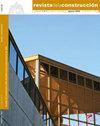减截面梁的性能及抗震性能研究
IF 1.4
4区 工程技术
引用次数: 1
摘要
工程师们更喜欢在地震带建造的钢弯矩框架中采用减梁截面连接,因为它们有许多好处。RBS形状设计对接头行为有显著影响。本文利用ANSYS有限元分析软件研究了RBS几何结构对节点性能和抗震性能的影响。由于文献中使用欧洲型材的研究数量有限,因此使用欧洲型材和钢牌号对RBS连接进行了调查。仿真研究分三个阶段进行。第一阶段,对文献中的实验研究进行了仿真,并对所建立的有限元模型的可靠性进行了校核。第二阶段,对验证后的数值模型进行几何变化,并在单调荷载下对得到的新模型进行检验,观察RBS几何对矩转行为的影响。在第三阶段,研究了循环荷载作用下RBS几何形状变化对其抗震性能的影响。通过研究,以图形形式展示了各种RBS几何形状变化对节理行为和抗震性能的影响。利用单调荷载作用下的分析结果,进行回归分析,推导出支座弹塑性刚度、弹性弯矩承载力和弹性转角的计算公式。此外,仿真模型表明,当采用欧钢型材和质量时,RBS节点的抗震性能满足抗震规范(AISC/ANSI 341-16)的最低要求。本文章由计算机程序翻译,如有差异,请以英文原文为准。
Investigation on behavior and seismic performance of reduced beam sections
Engineers prefer reduced beam section (RBS) connections in steel moment frames built in earthquake zones due to their many benefits. The RBS shape design significantly affects joint behavior. This paper examines the effect of RBS geometry on joint behavior and seismic performance using ANSYS finite element analysis software. RBS connections are investigated using European profiles and steel grades due to the limited number of studies using European profiles in the literature. The simulation study is carried out in three stages. In the first stage, an experimental study in the literature is simulated, and the reliability of the created finite element model is checked. In the second stage, geometric changes are made to the verified numerical model, and the obtained new models are examined under monotonic loading to observe the effect of RBS geometry on moment-rotation behavior. In the third stage, the effect of the change in the RBS geometry on the seismic performance is investigated under cyclic loading. As a result of the study, the effects of various changes made in the RBS geometry on the joint behavior and seismic performance are presented graphically. By using the results of the analysis under monotonic loading, the regression analysis is carried out, and the formulas giving the elastic-plastic stiffness, elastic moment capacity, and elastic rotation angle of the support are derived. Besides, simulation models show that the RBS joints' seismic performance met the minimum criteria specified in the earthquake code (AISC/ANSI 341-16) when European steel profiles and quality are applied.
求助全文
通过发布文献求助,成功后即可免费获取论文全文。
去求助
来源期刊

Revista de la Construccion
工程技术-工程:土木
CiteScore
2.30
自引率
21.40%
发文量
0
期刊介绍:
The Journal of Construction is aimed at professionals, constructors, academics, researchers, companies, architects, engineers, and anyone who wishes to expand and update their knowledge about construction. We therefore invite all researchers, academics, and professionals to send their contributions for assessment and possible publication in this journal. The publications are free of publication charges.
OBJECTIVES
The objectives of the Journal of Construction are:
1. To disseminate new knowledge in all areas related to construction (Building, Civil Works, Materials, Business, Education, etc.).
2. To provide professionals in the area with material for discussion to refresh and update their knowledge.
3. To disseminate new applied technologies in construction nationally and internationally.
4. To provide national and foreign academics with an internationally endorsed medium in which to share their knowledge and debate the topics raised.
 求助内容:
求助内容: 应助结果提醒方式:
应助结果提醒方式:


